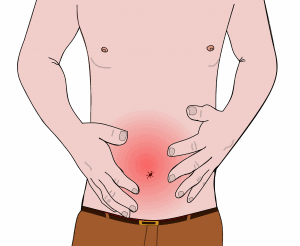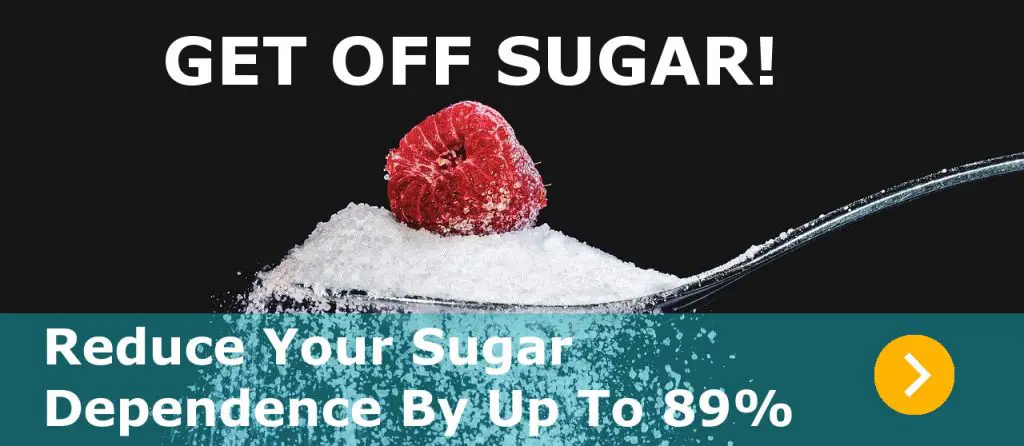We all like chocolate, however, some people often experience stomach cramps, sharp pain in the chest, gas, or excessive burping after eating chocolate.
Two of the most common reasons for these are lactose intolerance and acid reflux.
What health problems can chocolate cause?

Eating too much chocolate in the long term can increase a person’s calorie intake which can lead to weight gain and obesity which increases their risk of cardiovascular diseases – like hypertension, dyslipidemia -, and diabetes.
The most common symptoms related to eating chocolate are probably related to the digestive system. These are:
- stomach cramps
- chest pain, heartburn
- gas, burping, bloating
- nausea, vomiting
- diarrhea
- constipation
Eating large quantities can result in side effects related to caffeine such as
- sleeplessness
- nervousness
- heart palpitations
- increased urination
Research also says that cocoa in chocolate can trigger:
- migraine headaches
- skin reactions
- constipation
Stomach cramps after eating chocolate

These are the most common problems that might make chocolate trigger stomach ache:
- food allergy or food intolerance
- gallbladder, pancreas, or liver diseases
- irritable bowel syndrome (IBS)
A stomach cramp is a sudden, uncontrolled tight feeling in your stomach. Most of us experience occasional stomach cramps, and this can be normal, especially if you ate too much chocolate.
However, regular stomach cramps after eating chocolate are not normal. Chances are there is an underlying medical condition that should be diagnosed and treated.
Chocolate and stomach pain
If you have eaten too much chocolate and now have dull stomach pain, that can be normal. Such pain should go away in a few hours.
However, a sudden, sharp abdominal pain is never a good sign. If it lasts for hours, it could be caused by conditions like gallstones, pancreatitis.
Chocolate can cause pain anywhere in the stomach for people with these health conditions:
- gastritis
- IBS
- food intolerance
However, some people experience symptoms always on one side of the stomach. In such cases, the most likely triggers might be the following:
Pain in the upper right abdomen after eating chocolate
Since chocolate can be high in fat, it can trigger symptoms for those who have gallstones, an inflamed gallbladder, or liver problems.
Eating-related right side pain after fatty foods is often associated with gallbladder issues since the gallbladder is on the right side of the body.
If the gallbladder is the culprit, the pain very often radiates into other body parts on the right side.
Besides upper right stomach pain, right shoulder pain after having a meal is also a typical symptom of gallbladder issues. The pain sometimes radiates into the right arm, elbow, or neck.
Watch out for these symptoms:
- sharp, intense pain
- fever
- yellowish skin
These might indicate a serious problem in the digestive system, which might need medical attention right away!
Pain in the upper left abdomen after eating chocolate
Left side upper stomach pain after fatty and/or sugary foods often indicates issues with the pancreas.
Refined carbohydrates are not recommended for people with an inflamed pancreas (pancreatitis).
Upper left abdominal pain is a typical symptom of pancreatitis. Other symptoms are:
- fever
- rapid pulse
- nausea, vomiting
- sometimes pain radiates into the back
In the case of pancreas problems, it is very likely to experience symptoms after drinking alcohol, as this is the most common trigger.
Pancreas symptoms might be very severe, if the abdominal pain is very severe or you are experiencing other symptoms, like fever, contact your doctor!
Can chocolate cause chest pain?
The high sugar content of milk chocolate – like all sugary foods – can trigger symptoms for people who are prone to acid reflux.
Statistics say that many people experience acid reflux. However, if it happens more than twice a week you may have GERD which can cause serious health complications, if not treated.
While acid reflux is probably the most common reason for chest pain after eating chocolate, stomach pain might also radiate into the chest, back, or shoulder.
Chocolate and heartburn
Some studies claim that chocolate can cause heartburn, one of the symptoms of acid reflux. A study by the American Society for Gastrointestinal Endoscopy found that chocolates reduce lower esophageal sphincter pressure, and this change may make a person vulnerable to heartburn.
Additionally, the high fat content of chocolate delays stomach emptying (food stays longer in the stomach) and the calcium content of the milk stimulates a hormone (gastrin) that increases acid production.
Acid reflux – also called gastroesophageal reflux disease (GERD) – is a condition that causes a backward flow of acid into one’s esophagus. These acids thus cause unpleasant burning sensation in the esophagus, around the center of the chest. This is called heartburn.
Often reflux results from food that one eats and chocolates are among the foods that you probably shouldn’t eat if you have reflux. Many people experience chest pain after eating sugary foods, like chocolate.
Additionally, caffeine and theobromine in chocolate can also increase acid reflux symptoms.
Many diets suggest avoiding chocolate as one way of preventing reflux symptoms.
Why does chocolate make you burp?
Burping after eating chocolate can be a sign of several problems:
- Acid reflux: Acid reflux burps tend to cause a sour taste in the mouth. Chest pain is also a typical symptom.
- Food intolerance: Might also cause stomach pain, gas, diarrhea, nausea.
- Irritable bowel syndrome: IBS symptoms can be similar to food intolerance symptoms. Some people also experience constipation.
- or simply eating too much chocolate
While your other symptoms might help identify the underlying cause, it’s always best to consult with a doctor if you are often burping after chocolate or other sweets.
Heart palpitations after eating chocolate
Chocolate might cause heart palpitations, but only if consumed in large amounts.
Heart palpitations are usually related to the caffeine content of chocolate. Theobromine and other stimulants in chocolate might also be the cause.
Dark chocolates contain more caffeine than milk or white chocolates.
However, unless you eat excessive amounts of chocolate, it should not cause heart problems.
Chocolate allergy and intolerance
The most common ingredients of chocolate that can cause symptoms are milk and cocoa. However, some chocolates may contain soy, nuts, almond, caffeine, etc., all of these can trigger symptoms.
Common chocolate allergy symptoms are:
- hives
- swollen throat, tounges
- coughing
- nausea
- vomiting
- stomach cramps
Common chocolate intolerance symptoms are:
- diarrhea
- stomach pain
- nausea
There are two main differences between allergy and intolerance:
- Allergy is the abnormal response of the immune system to certain foods. Intolerance is a problem with the digestive system.
- While some symptoms might look the same, allergy can cause anaphylaxis, which requires immediate medical care.
If you have chocolate allergy or intolerance but are not sure which ingredient is the culprit, or not sure if it is allergy or intolerance, you should go to an allergy test to sort it out.
Too much chocolate
Eating too much chocolate can have unpleasant side effects, but how much chocolate is too much?
Cleveland Clinics recommends about 1 ounce of dark chocolate a few times a week.
The type of chocolate is also important. The University of Georgia advises choosing low-fat, low-sugar dark chocolate with a cocoa content of 70% or higher.

What happens if you eat too much chocolate?
These are the most common symptoms of eating too much chocolate:
- stomach pain
- heart palpitations
- burping
- chest pain
- frequent urination
- shakiness, dizziness
- sleeping problems
What to do after eating too much chocolate?
Unless you have severe symptoms after a lot of chocolate, simply giving your body some time to recover might be enough.
You might also try these tips:
- Chocolate, especially in large amounts, might be diuretic and cause frequent urination. In such cases, you need to drink some water to avoid dehydration.
- Light physical exercises, like walking or yoga, might relieve the symptoms.
However, if your symptoms are severe, you should not hesitate to ask for medical help!
What to do if you cannot eat chocolate?
Chocolate is best when consumed in moderation. However, if it triggers symptoms, it may be best that you avoid completely eating it.
Fortunately, there are many healthy alternatives that’ll help you conquer your chocolate cravings:
- bananas
- pawpaw
- yogurts
- nuts
- etc.
One can also replicate the chocolate flavor by trying cocoa powder. Add enough quantity of it into milk, yogurt, coffee, shakes, cottage cheese, or smoothies and enjoy the rich chocolatey goodness without extra calories, fat and sugar.
Final thoughts
To sum up, chocolate contains several ingredients that might cause chest pain after eating:
- sugar
- cocoa
- fat
- caffeine
- theobromine
If you are experiencing symptoms – like stomach cramps, heartburn, excessive burping, chest pain – after eating chocolate, try to limit the amount you eat, maybe try different types of chocolates to see if your symptoms worsen or get better.
Frequently asked questions
Milk chocolate tends to contain more fat and sugar, dark chocolate contains more cocoa. Since both fat, sugar and cocoa can cause reflux and everybody reacts a bit differently to the food we eat, all we can say is that you might want to try both and see if they cause you any symptoms.
Many research shows that a small amount of chocolate is beneficial for your heart because of its flavonoid content. Just make sure you eat dark chocolate, as it contains more flavonoids.
Even if you don’t have reflux, too much chocolate can cause some discomfort. One reason for that might be milk allergy. Too much fat, sugar, or corn syrup might also be a problem.
Try to limit the amount of chocolate you eat and if the problem persists you might want to consult with a doctor to find out if it’s a food allergy or reflux or some other problem.
